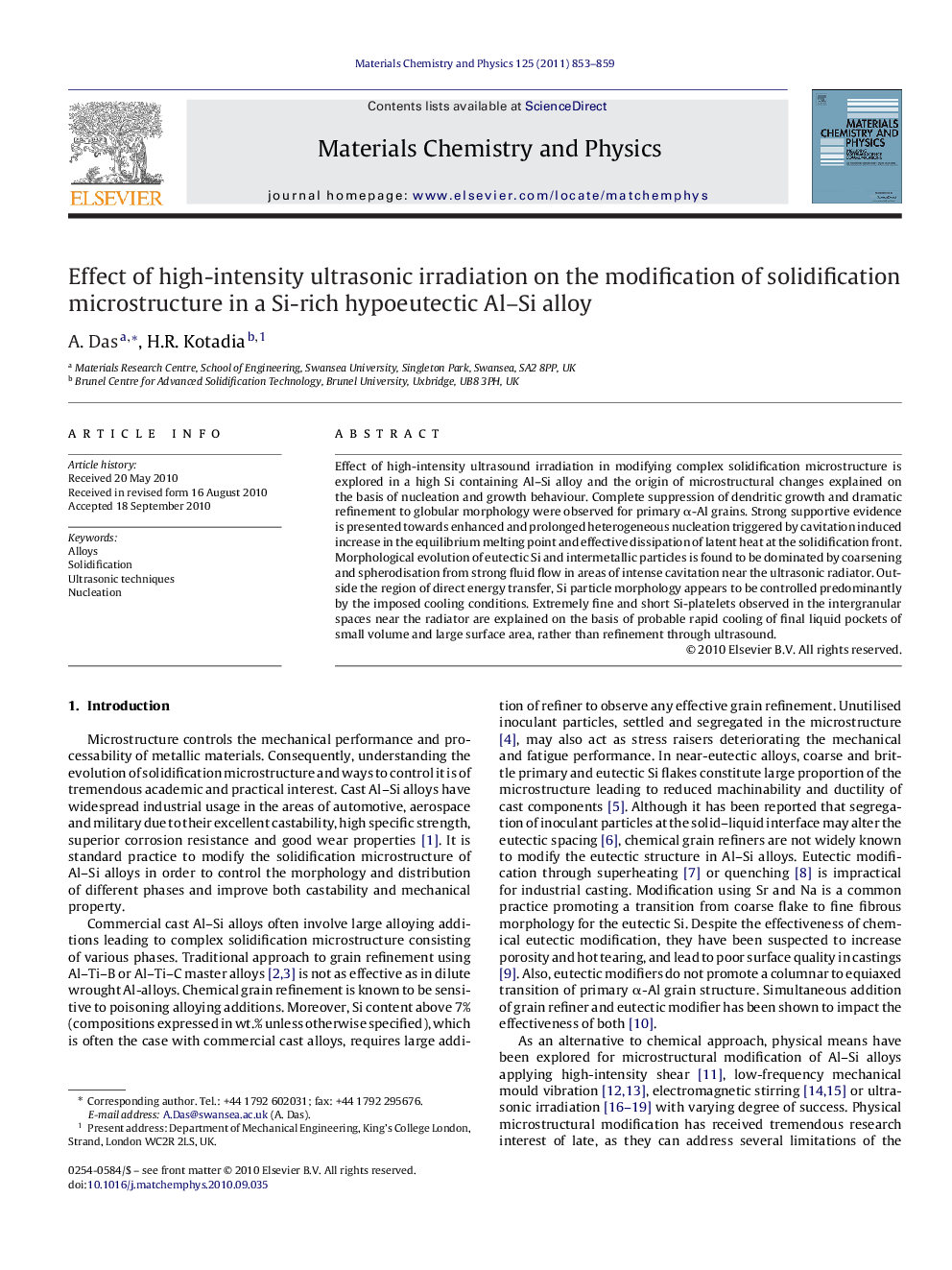| Article ID | Journal | Published Year | Pages | File Type |
|---|---|---|---|---|
| 10638158 | Materials Chemistry and Physics | 2011 | 7 Pages |
Abstract
Effect of high-intensity ultrasound irradiation in modifying complex solidification microstructure is explored in a high Si containing Al-Si alloy and the origin of microstructural changes explained on the basis of nucleation and growth behaviour. Complete suppression of dendritic growth and dramatic refinement to globular morphology were observed for primary α-Al grains. Strong supportive evidence is presented towards enhanced and prolonged heterogeneous nucleation triggered by cavitation induced increase in the equilibrium melting point and effective dissipation of latent heat at the solidification front. Morphological evolution of eutectic Si and intermetallic particles is found to be dominated by coarsening and spherodisation from strong fluid flow in areas of intense cavitation near the ultrasonic radiator. Outside the region of direct energy transfer, Si particle morphology appears to be controlled predominantly by the imposed cooling conditions. Extremely fine and short Si-platelets observed in the intergranular spaces near the radiator are explained on the basis of probable rapid cooling of final liquid pockets of small volume and large surface area, rather than refinement through ultrasound.
Related Topics
Physical Sciences and Engineering
Materials Science
Electronic, Optical and Magnetic Materials
Authors
A. Das, H.R. Kotadia,
